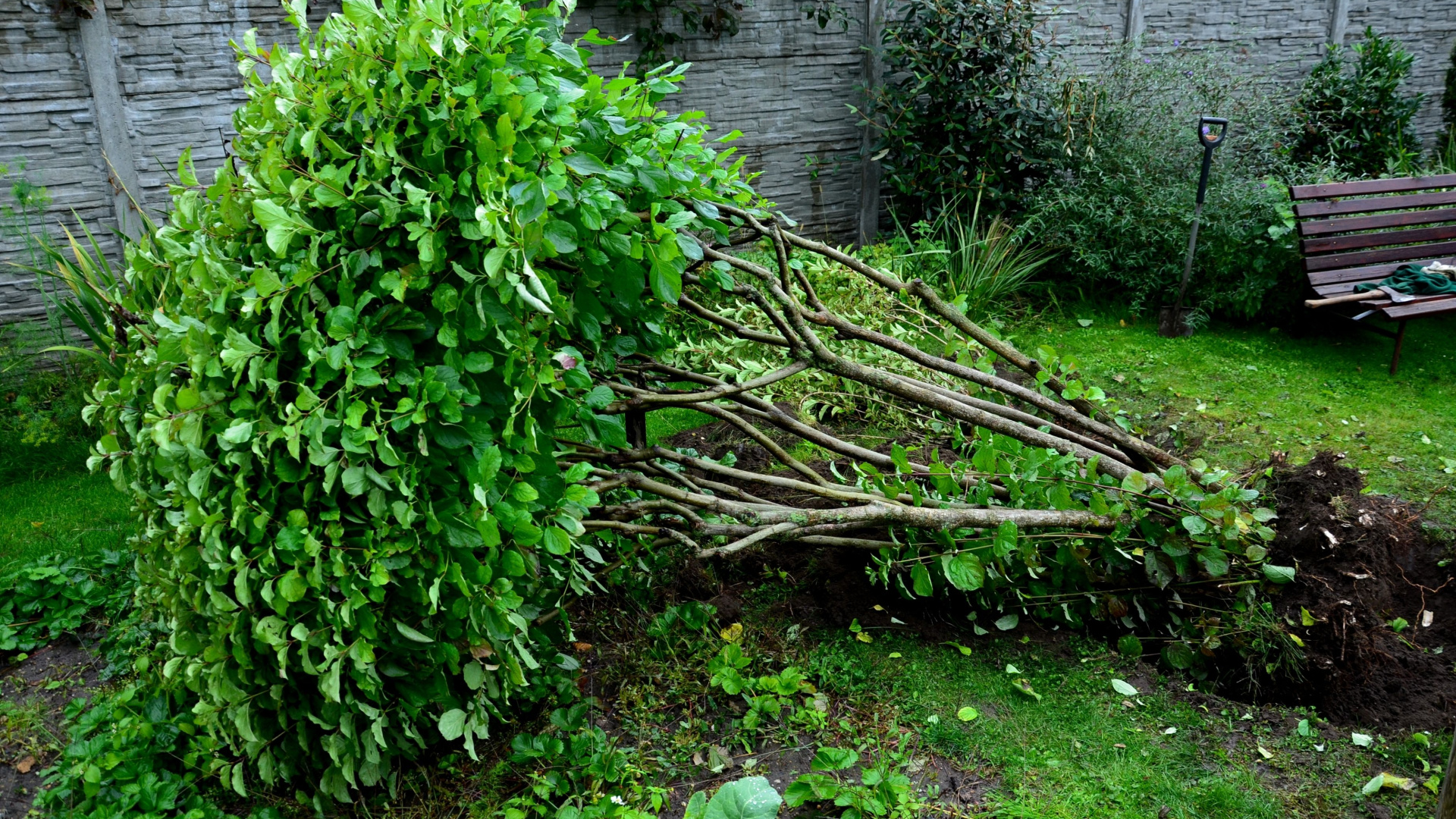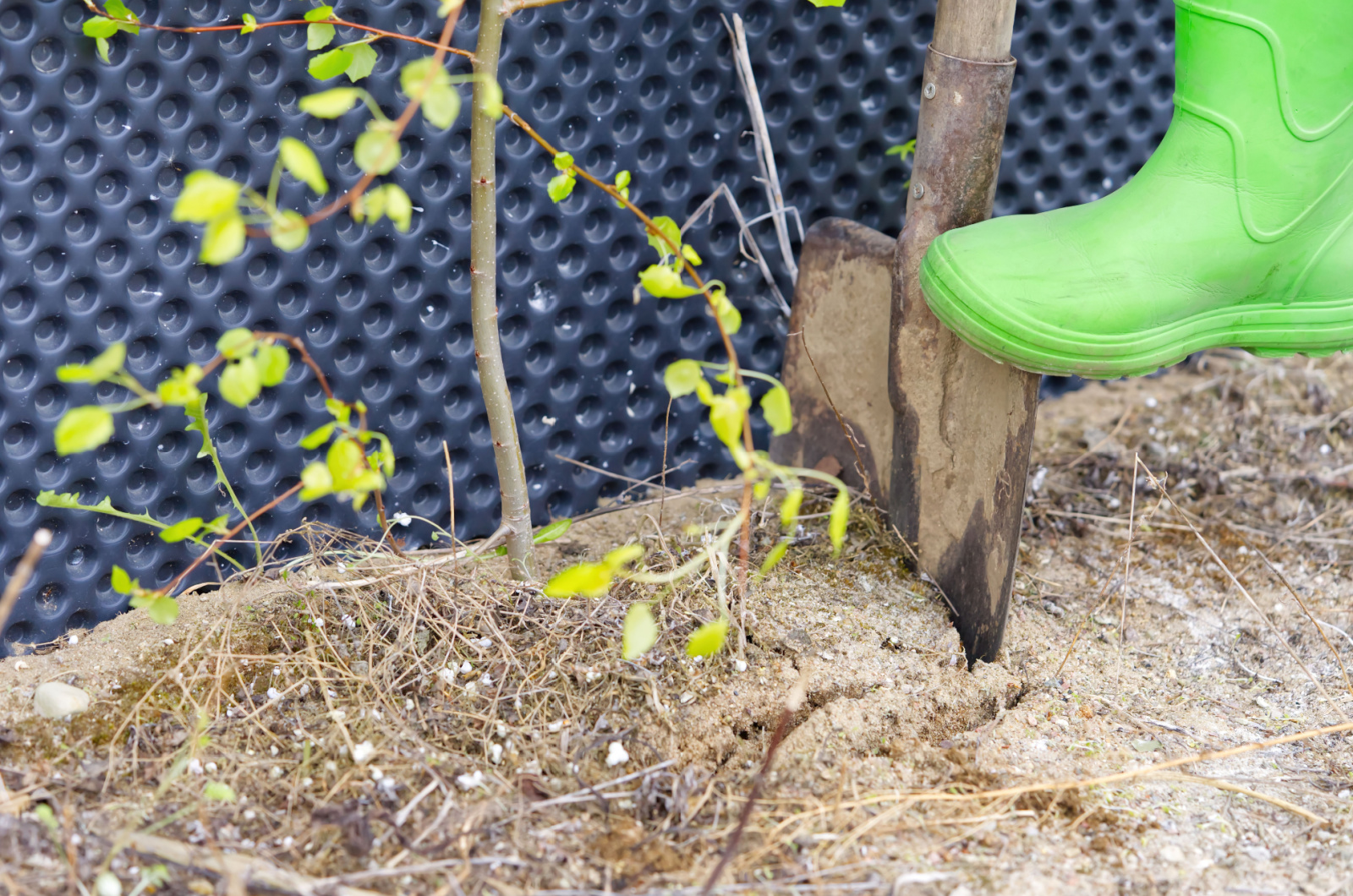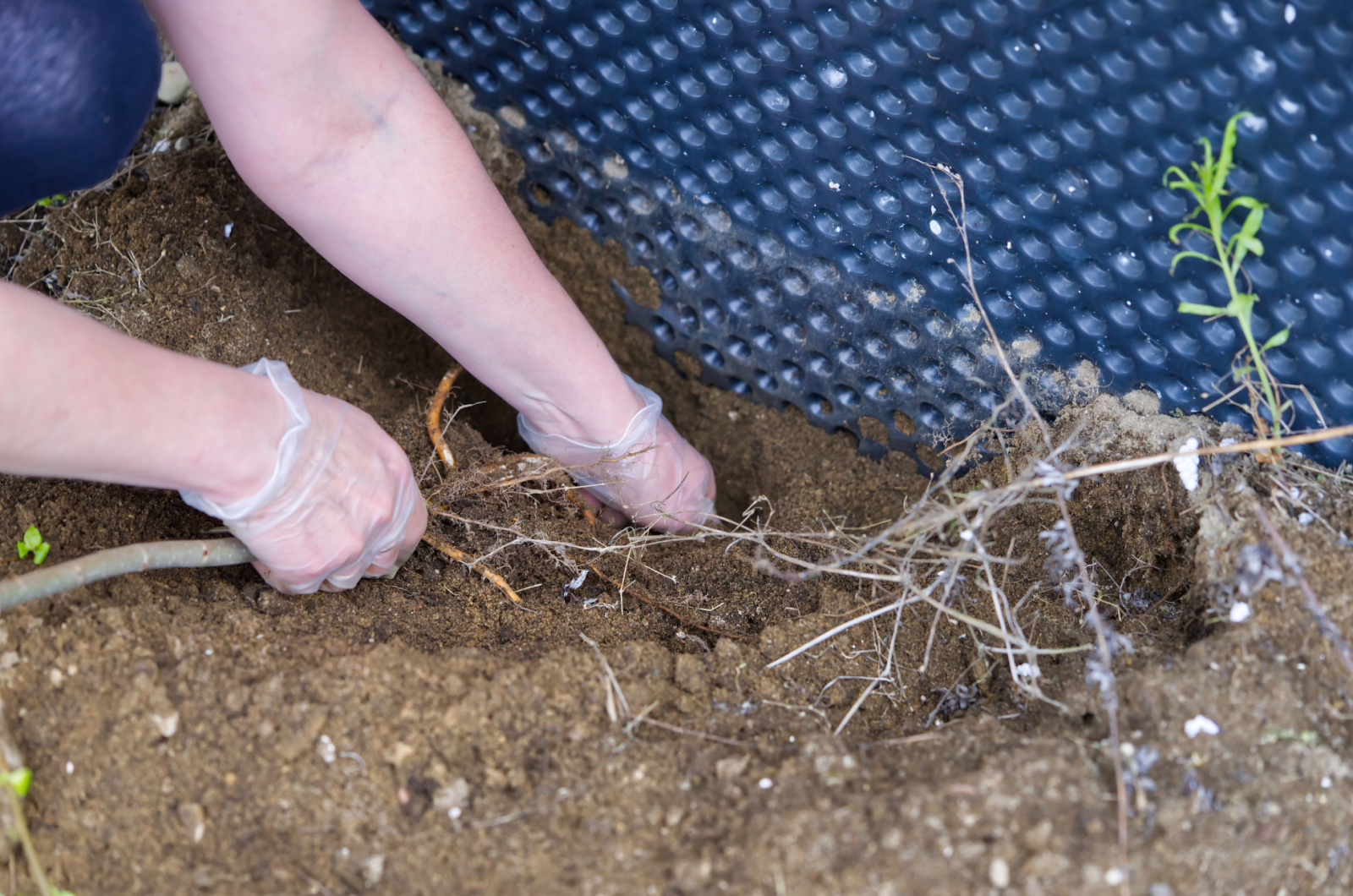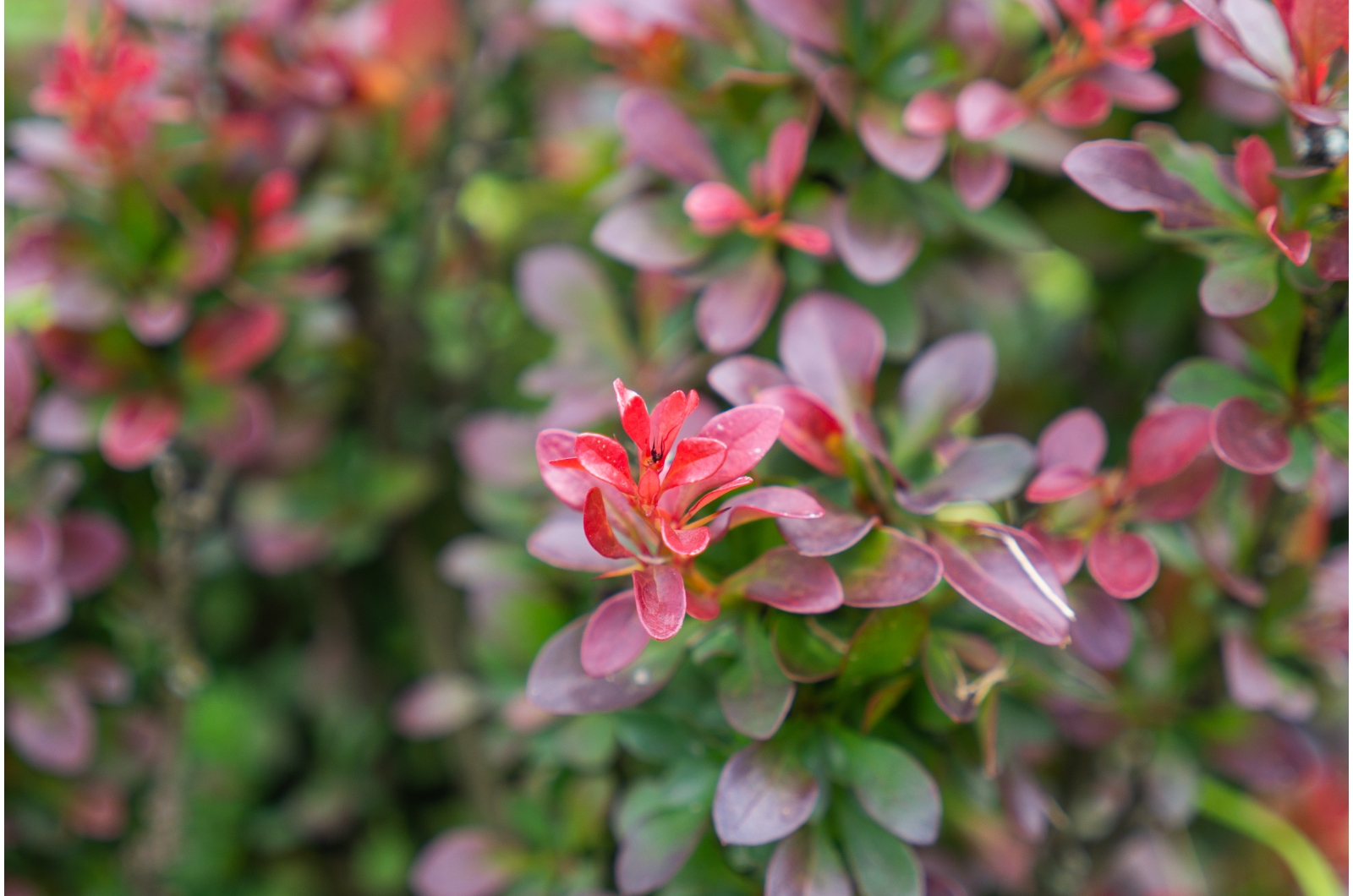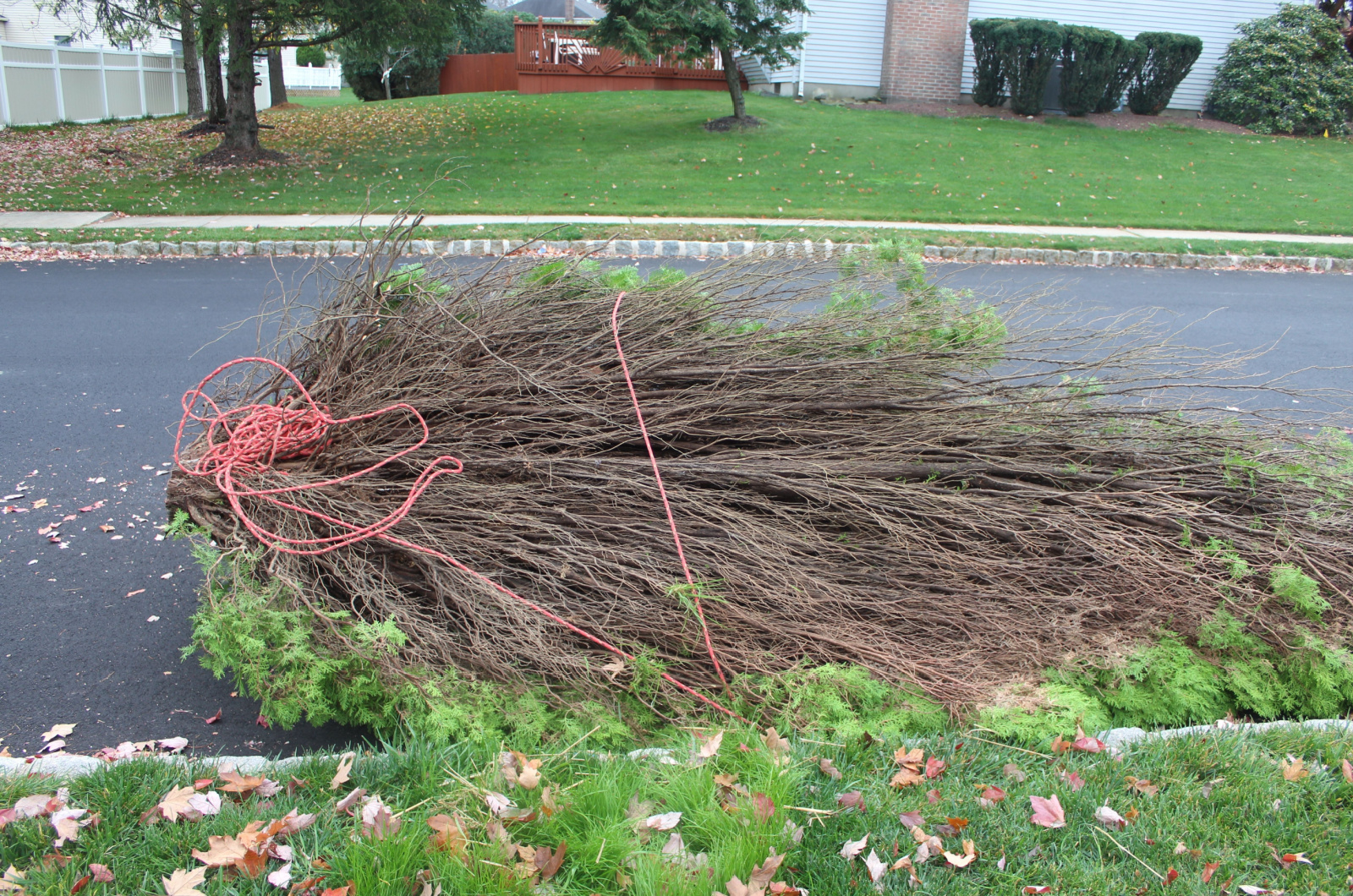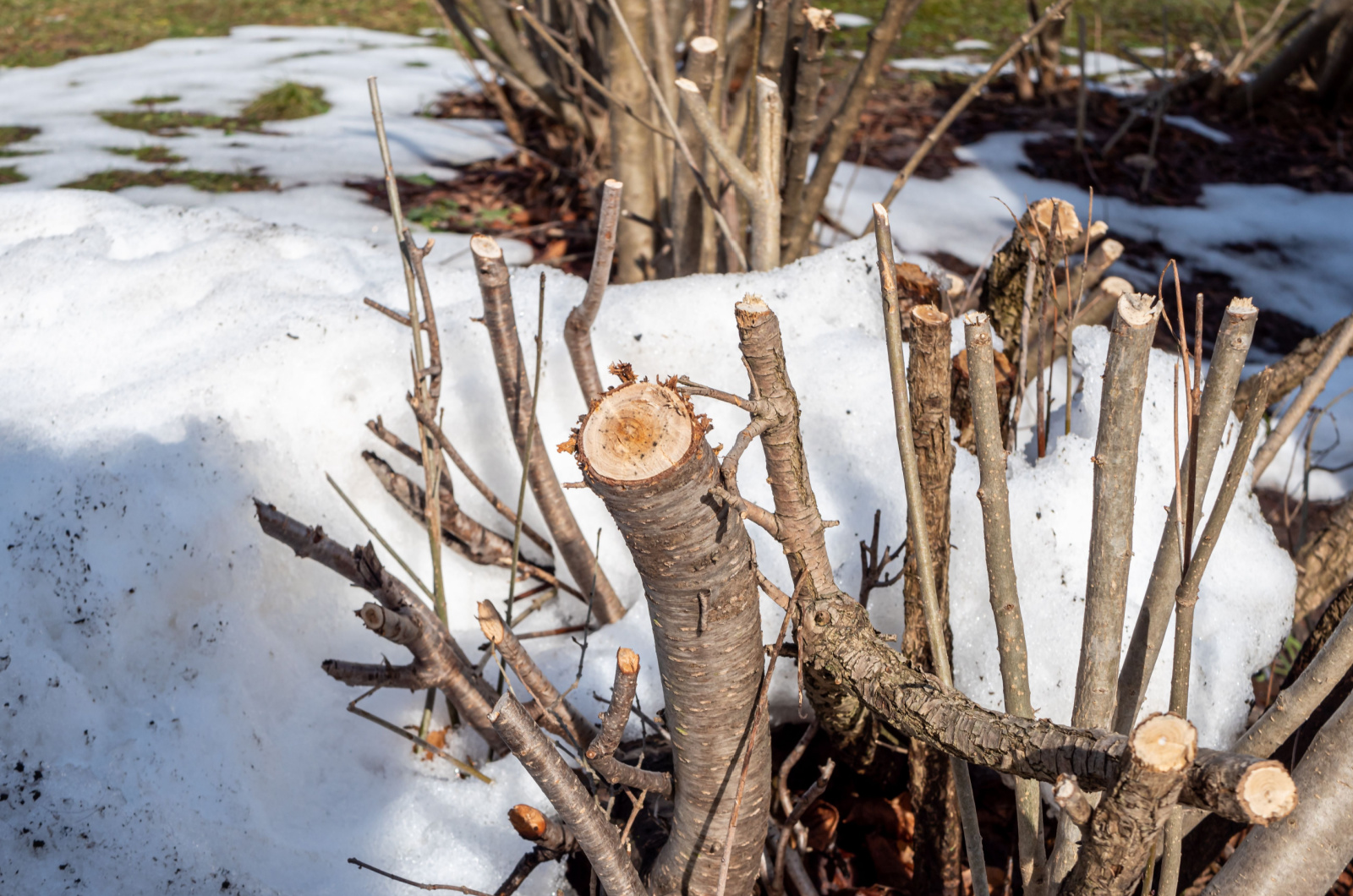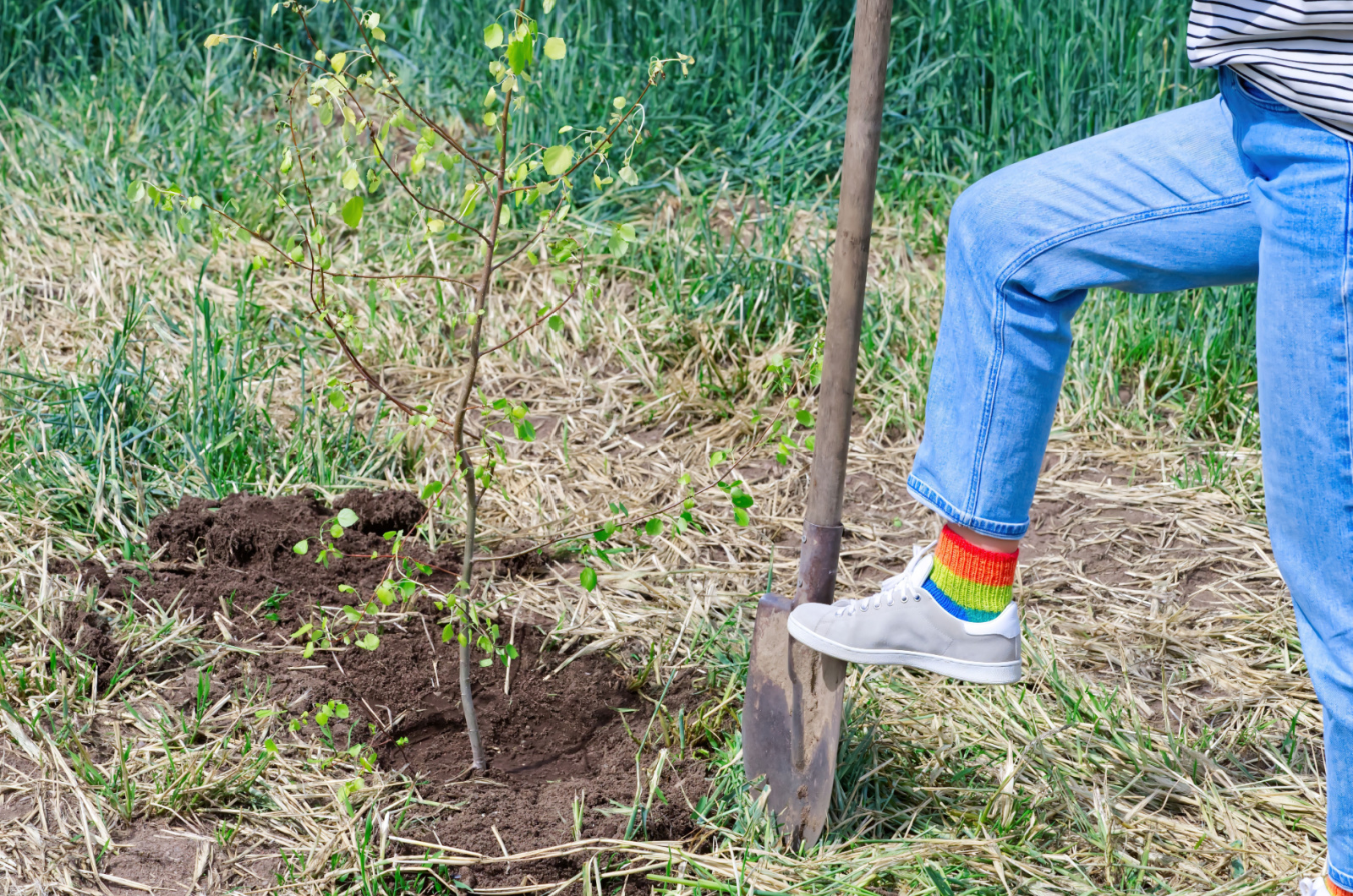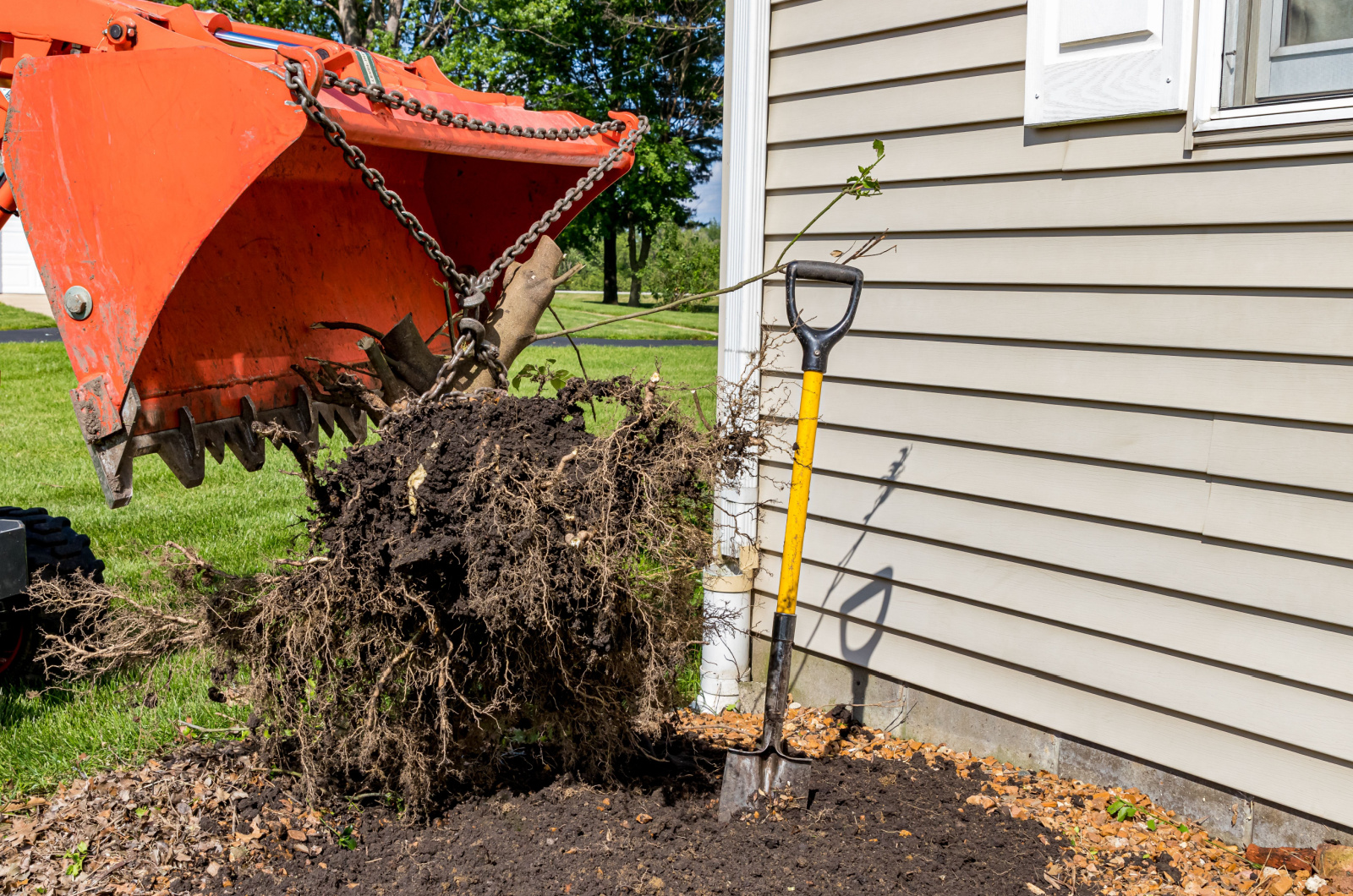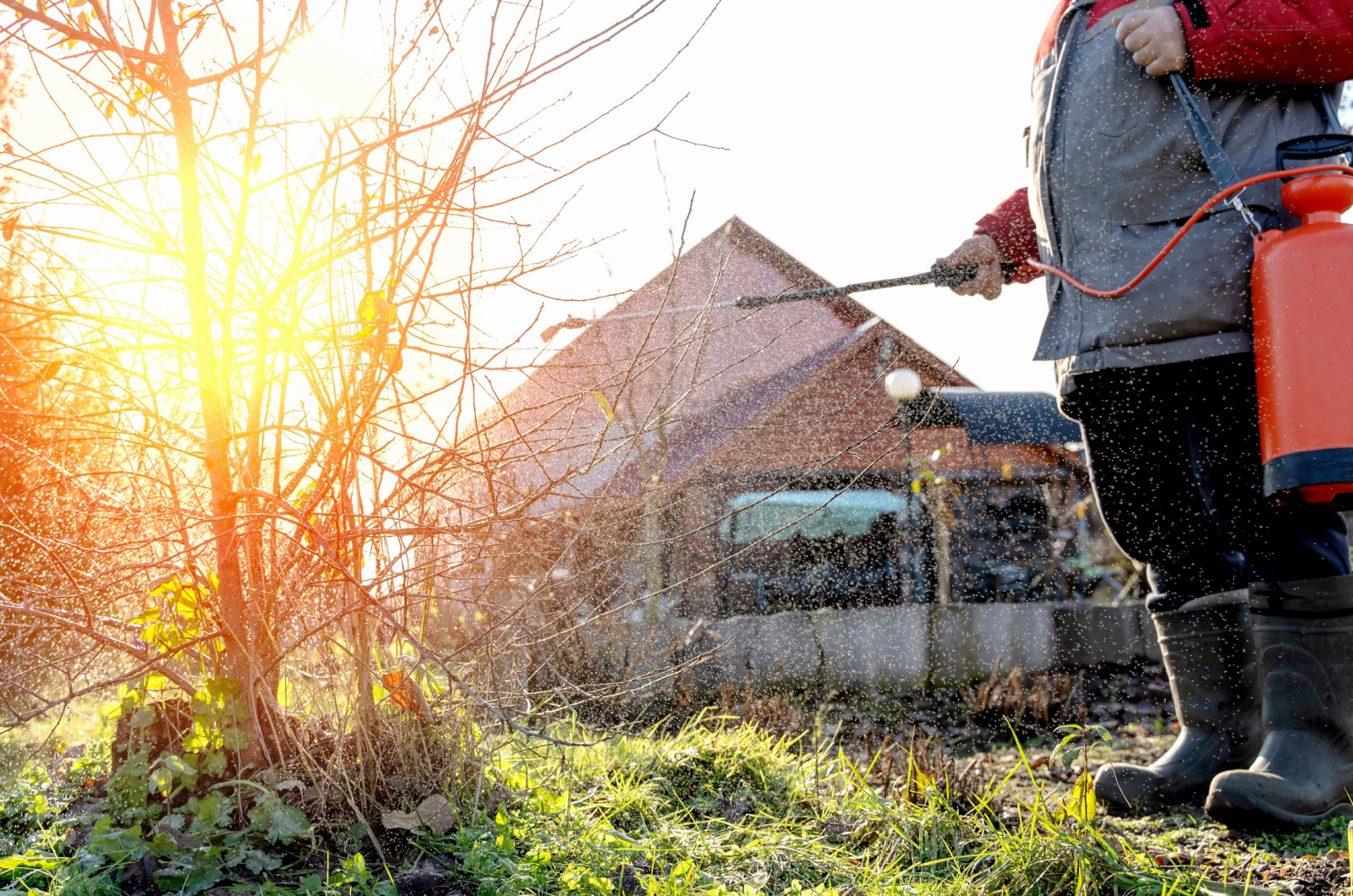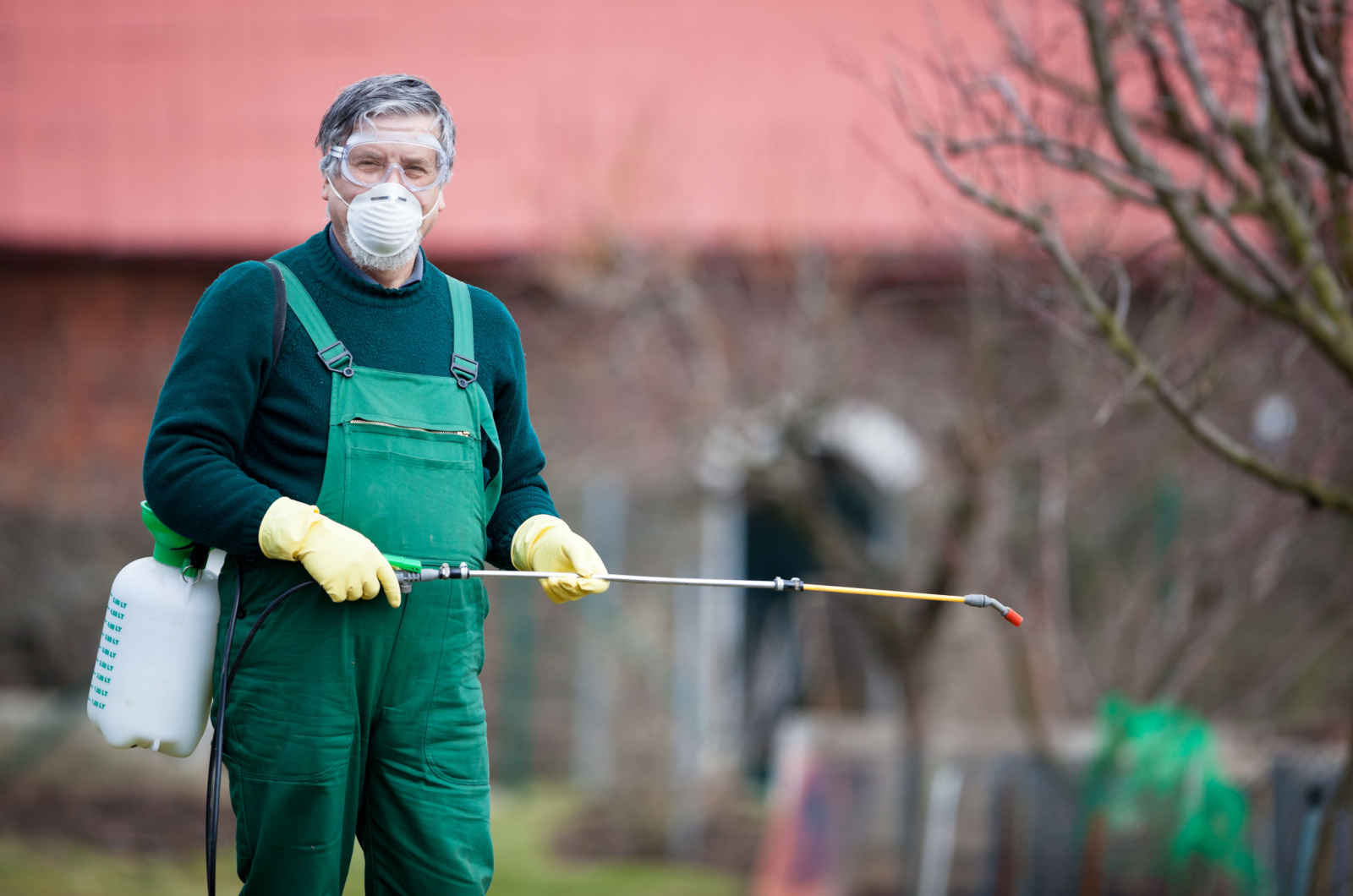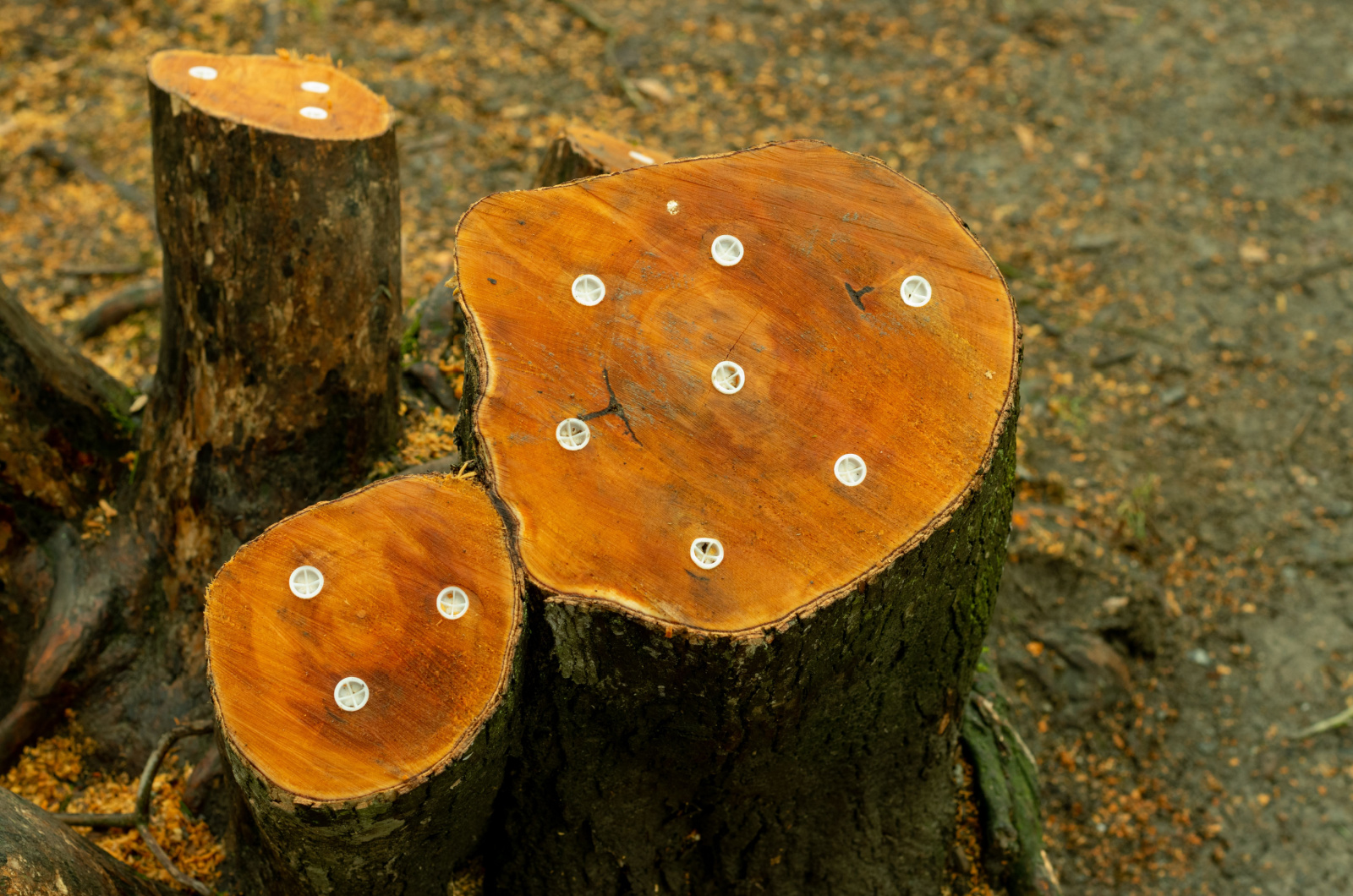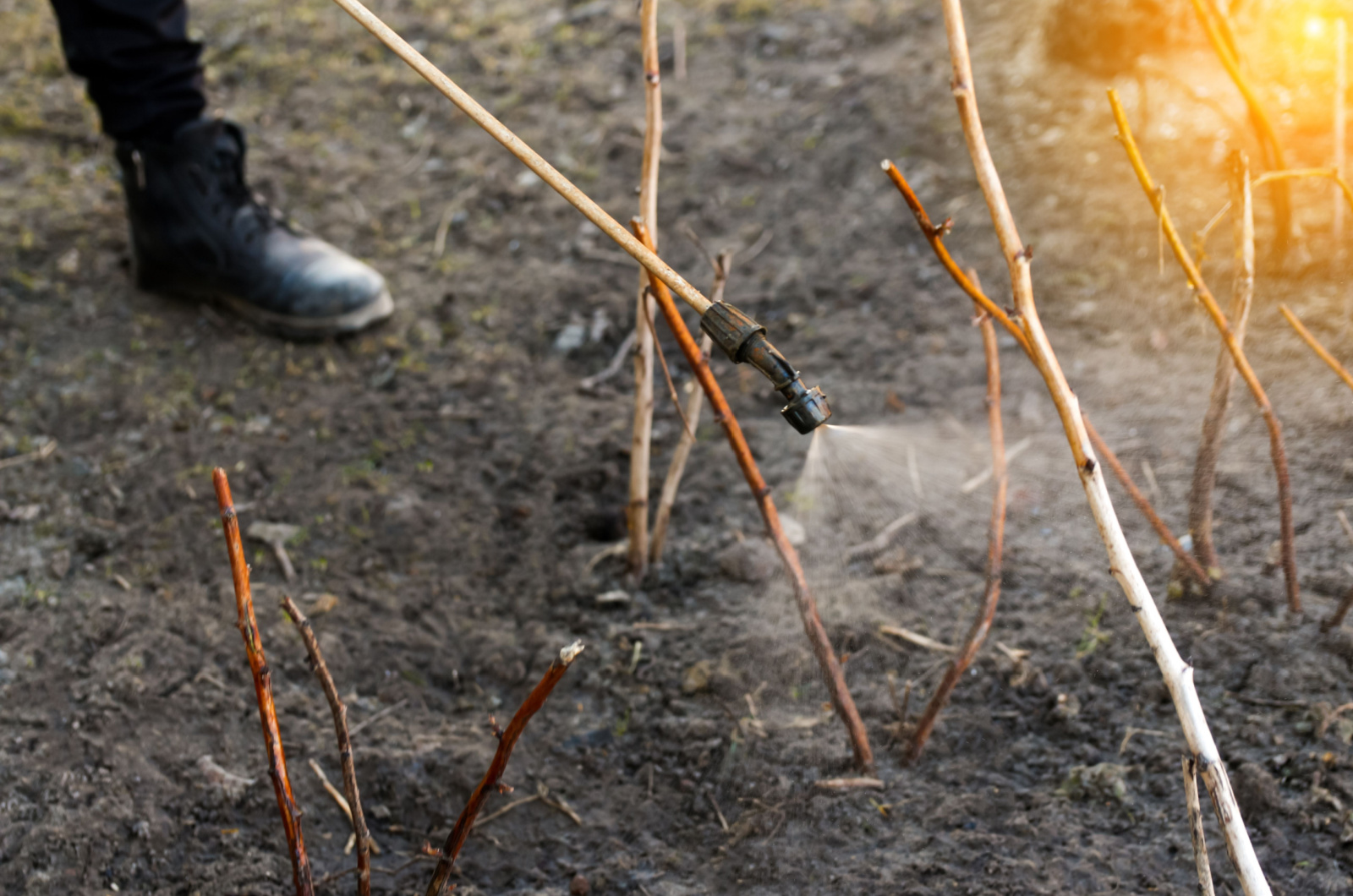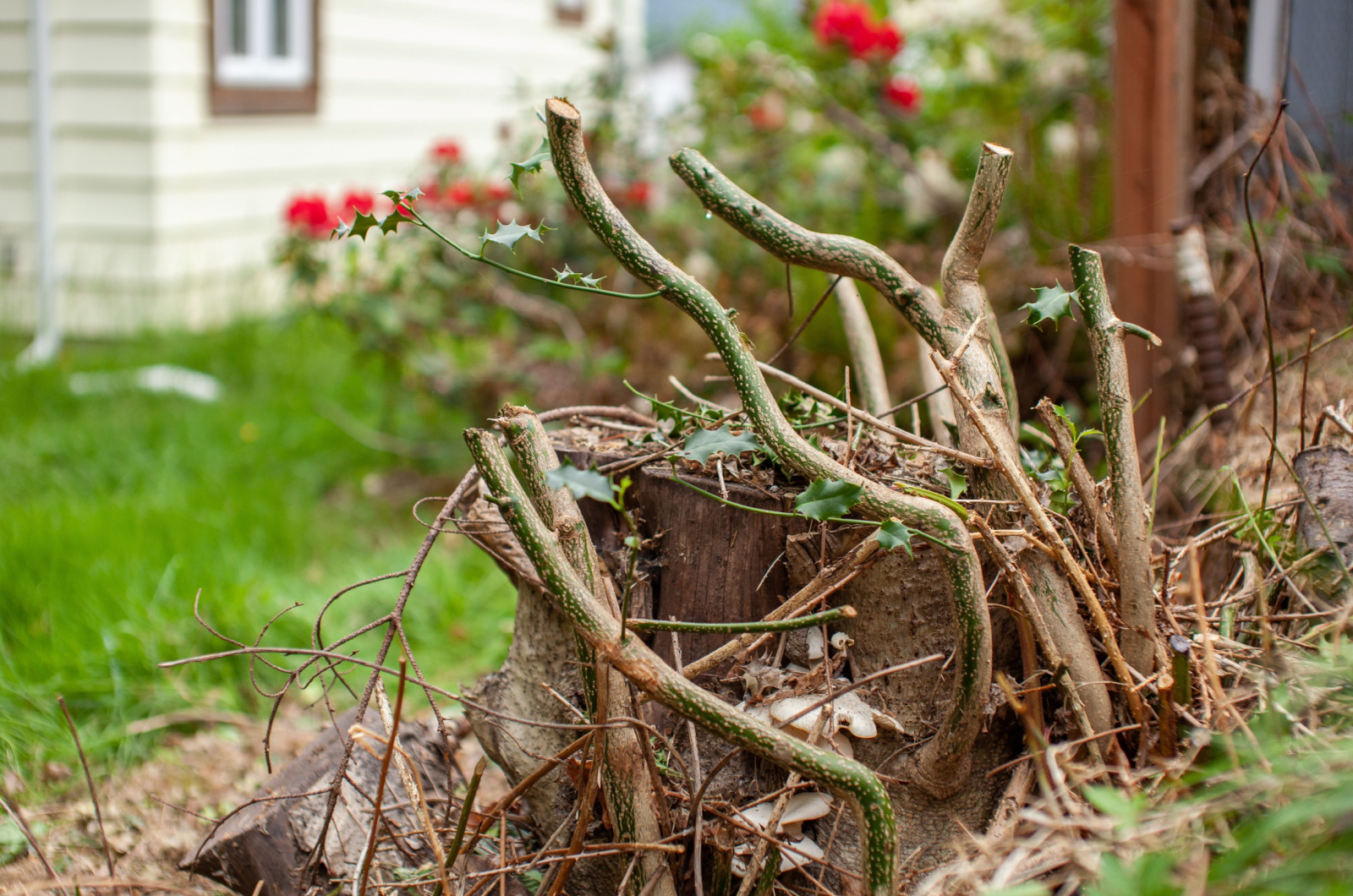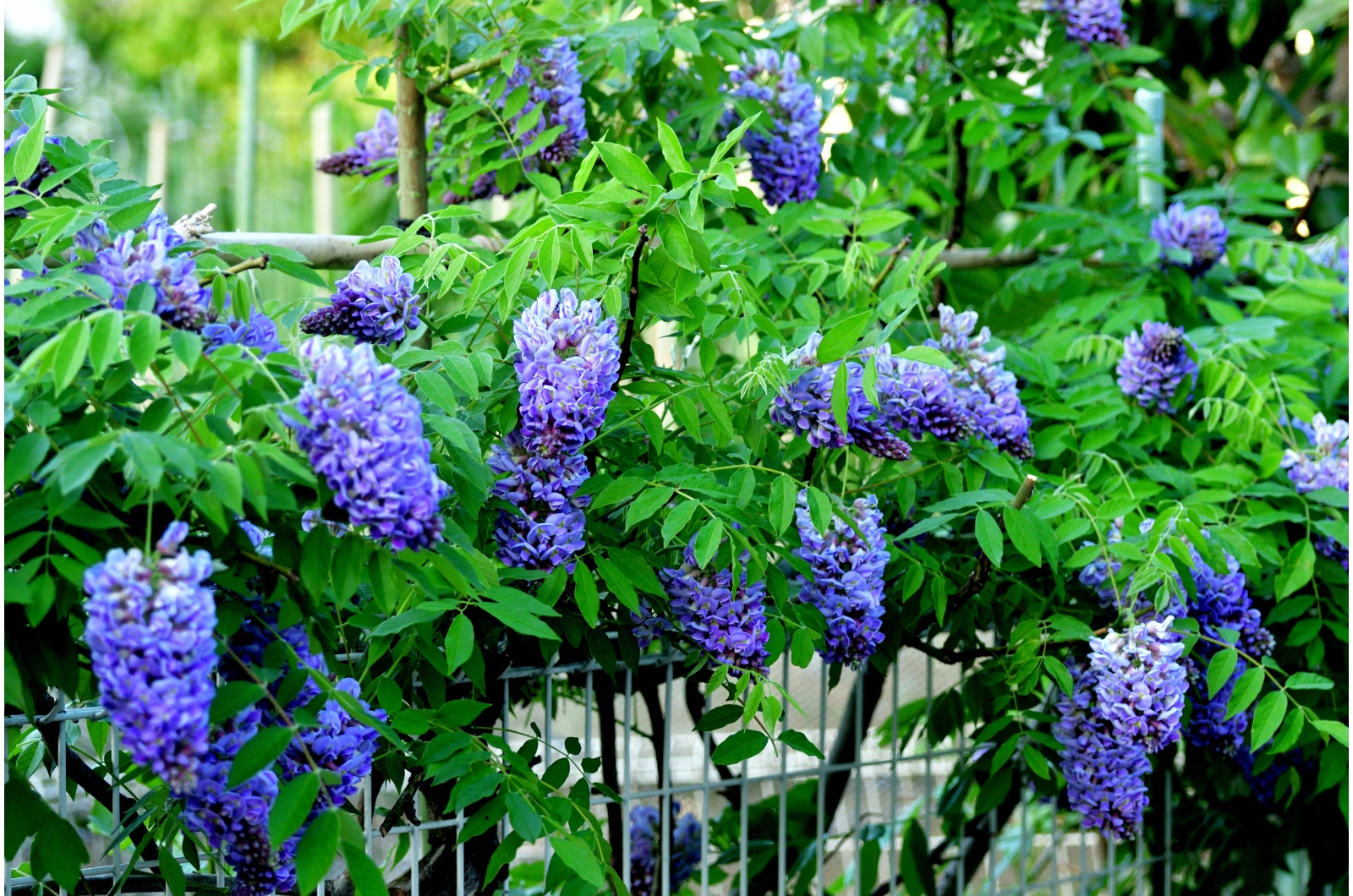Invasive shrubs are terrible for our ecosystem. They can choke out other plants and look awful since they spread everywhere without any rules or control.
The good news is that there are ways you can get rid of them. You do have to prepare yourself for persistent efforts because invasive shrubs can (and will) return over time.
Here’s how you can remove them from your landscape for good!
Let’s get started!
Why Remove Invasive Bushes?
As I already mentioned, invasive plants can choke out your other green buddies. They spread like wildfire and will fill up your landscape in a blink of an eye.
But that’s just the beginning of the story. Invasive plants harm ecosystems in another way. They reduce biodiversity and don’t support native pollinators, bugs, and wildlife as much as native species.
And if that’s not enough to convince you to eradicate invasive shrubs from your property, here’s another reason. Many of these plants have shallow roots, which can decrease water quality and increase soil erosion.
This is especially true when compared to native species, which benefit the environment in every aspect.
The worst part is that you can’t just plant natives and hope for the best. Invasive shrubs are aggressive and will outcompete native plants. That’s why your only option is to get rid of them for good!
Commit To Persistent Efforts
If you know anything about palm tree stump removal, you know it is a one-time-only job. This isn’t the case with getting rid of invasive shrubs.
They often bounce back, especially if you haven’t removed them entirely the first time. That’s why you have to go all-in if you really want to remove them.
You’ll need to go back to the same place more than once to get rid of new shoots and sprouts. It doesn’t have to be every week, but prepare yourself for a few trips to the same removal spot!
8 Steps Of Removing Invasive Shrubs
When it comes to eradicating invasive shrubs, there’s no one-size-fits-all approach. It depends on what method you find the easiest and what works best for your situation.
The plant variety, its size, and the size of the infestation all play a crucial role.
With that in mind, here’s a general guide that can help you if you’re just getting started on your invasive-shrub-removal journey!
#1 Identify The Plant
Identifying plants is a key step when removing invasives. Many of them can look like native plants, so you have to make sure that you’re getting rid of the right variety.
This isn’t an easy job for a beginner. Luckily, there are platforms where you can search for online species specific to a certain region. There are trees and shrubs invasive in the Pacific Northwest, invasive plants in the Midwest, and Southeast invasives.
And if you’re still not sure whether a plant you have in your backyard is invasive or not, you can always contact your local forestry department or agricultural extension office.
One thing that can help you out is monitoring their leaves. Invasives produce foliage earlier in spring than native plants and keep them for much longer come fall.
#2 Take Note Of The Infestation Size
Removing an acre of Japanese barberries is not the same as uprooting a single plant. That’s why seeing the size of the infestation can help you opt for the best removal method.
If you’re lucky, you’ll only have a single invasive shrub in your garden. In that case, you can opt for this great hack for removing unwanted plants. Uproot the bushes, and that’s it!
Unfortunately, many invasives spread through their roots and rhizomes as well as seeds. One Japanese barberry can develop into 20-50 new shrubs!
A large number of shrubs is more difficult to remove, but choosing the right removal method will make this chore a lot easier.
#3 Wait Until The Right Time Of Year
You can remove invasive shrubs at any time of the year. Yet, you’ll get the best results if you do it in spring or fall.
The limited growth rate at this time will make it easier to get rid of everything that needs removal.
Another reason is proper identification. Deciduous shrubs drop their foliage in winter and it may be difficult distinguishing invasives from wanted bushes. Of course, you can always look at their bark, fruits, and overall appearance.
Or you can identify the plant for removal in summer, mark it, and come back in winter to tackle it!
Lastly, many invasive species produce foliage earlier than natives. This will make it easy for you to recognize the Chinese privet leaf, Amur honeysuckle, barberry, and other varieties.
P.S. Invasives reduce the population of natives. This can be a good thing since you won’t have to worry too much about removing plants you want.
#4 Start With Easier-To-Remove Spots
If you have a huge property and a severe shrub infestation, it may be overwhelming to even think about removing all those weeds.
That’s why you should plan your removal strategy beforehand. Start with less-impacted areas such as the edges of your property, rather than the middle.
This technique will slow down the spread of invasive shrubs into unaffected areas. It will also show you that removal is possible – it only takes some time!
Once you finish with the outskirts, slowly work your way to the middle and dense shrubbery.
#5 Use Mechanical Methods First
Your first step for tackling invasive shrubs should be exhausting all manual and mechanical methods first. Try digging, cutting, pulling, and uprooting first.
None of these techniques will cause permanent damage to the environment.
Uproot the smaller shoots and sprouts with your hands. Do this after rain or water the shrubs beforehand to make the plants easier to pull out.
Removing larger shrubs by hand is more difficult, but it can be done! Cut the branches down to a few inches off the ground and use a shovel to dig up the entire root system.
P.S. Even if you don’t uproot the entire stem, cutting back branches will slow down their growth rate and hinder seed production.
#6 Think About Chemical Control
Mechanical control is great for removing a couple of shrubs at most. But clearing an entire field this way could take weeks or even months. And the worst part is that most shrubs will regrow, so you’ll have to tackle the same exhausting job again!
I’m not a big proponent of herbicides, but they are your best option if you’re dealing with a huge infestation of buckthorn or barberry.
And the thing is, treating large shrub infestations with herbicides poses less danger to the environment than letting them grow.
These shrubs can destroy native plans and harm biodiversity. And if you choose herbicides mindfully, go for targeted varieties and those that break down fast, as you will cause minimal chemical damage to the environment.
#7 Find The Right Herbicide
It may be as simple as killing tree roots with bleach or spending hours of research looking for the right chemical to destroy the invasive shrubs you’re dealing with.
Picking any old herbicide from the shelf and spraying your landscape will do more harm than good. It’s not the most effective method and can destroy your other plants, contaminate the soil and water, etc.
Instead, stick to popular methods such as painting stumps and spraying regrowth.
Painting Stumps
This method refers to cutting the shrub as close to the ground as possible and “painting” it with a herbicide soon after. When done later in the year, it has a success rate of 90%. (1)
Fall is the best time to remove stumps this way, but spring and winter removal yield amazing results as well.
Whatever season you choose, make sure there is no chance of rain in the following days. It can wash off the herbicide and reduce the effectiveness of the method.
The key is to choose the right herbicides. Glyphosate and triclopyr work best. Just make sure not to use overly diluted products (20% glyphosate and 10% triclopyr is ideal).
Choose the right herbicide for the job! Go with products for aquatic applications when removing shrubs in wetlands.
After you find the right weed killer, cut the shrub all the way to the stump. Paint the cut side with the herbicide and avoid creating any runoff.
P.S. If you have a large infestation to get rid of, go with dyed herbicides. This will allow you to keep track of all the stumps you’ve treated!
Spraying Regrowth
The other method of chemical shrub control includes cutting them to the ground and letting them regrow. Then you spray the new shoots with herbicides, and that’s it.
This method works best on shrubs that have many tiny sprouts, such as multiflora rose and Japanese barberry.
Choose a combination of glyphosate and triclopyr for aquatic applications to reduce the harmful effect to non-targeted plants. (2)
Bear in mind that glyphosate is a broad-spectrum weed killer, so it can harm your other plants. Use these chemicals with caution.
If you’re using concentrated amounts and not pre-prepared products, dilute the active ingredients to 1-2%.
Fill a backpack sprayer with the solution and mist the leaves and shoots until they are damp, not soggy. Try not to spray the surrounding plants because the weed killers will destroy them, too!
#8 Look For Regrowth
No matter what removal method you use, there’s a high chance that the invasive shrubs will regrow.
Look for new shoots and saplings and remove them as soon as you notice them. Keep in mind that getting rid of a couple of young sprouts is much easier than dealing with a whole shrub!
Replant With Natives
After you remove invasive bushes, it is time to replant the area with natives. Make sure you remove all unwanted species before replanting because invasive shrubs will choke them out.
Planting natives will flood your landscape with native insects and wildlife, promote biodiversity and a healthy ecosystem, reduce erosion, and add more interest.
You can also add other ornamental, non-native yet non-invasive species to enhance the beauty of your garden.
Final Thoughts
Removing invasives doesn’t have to be a tedious job if you approach it with a plan.
Bear these steps in mind before undertaking this chore and you’ll have no problems whatsoever.
References:
1. Schulz, K. E., Wright, J., & Ashbaker, S. (2012). Comparison of Invasive Shrub Honeysuckle Eradication Tactics for Amateurs: Stump Treatment versus Regrowth Spraying of Lonicera maackii. Restoration Ecology.
2. Gover, A., Jackson, D., Wurzbacher, S., & Templeton, S. (2020). Japanese Barberry. PennState Extension.

